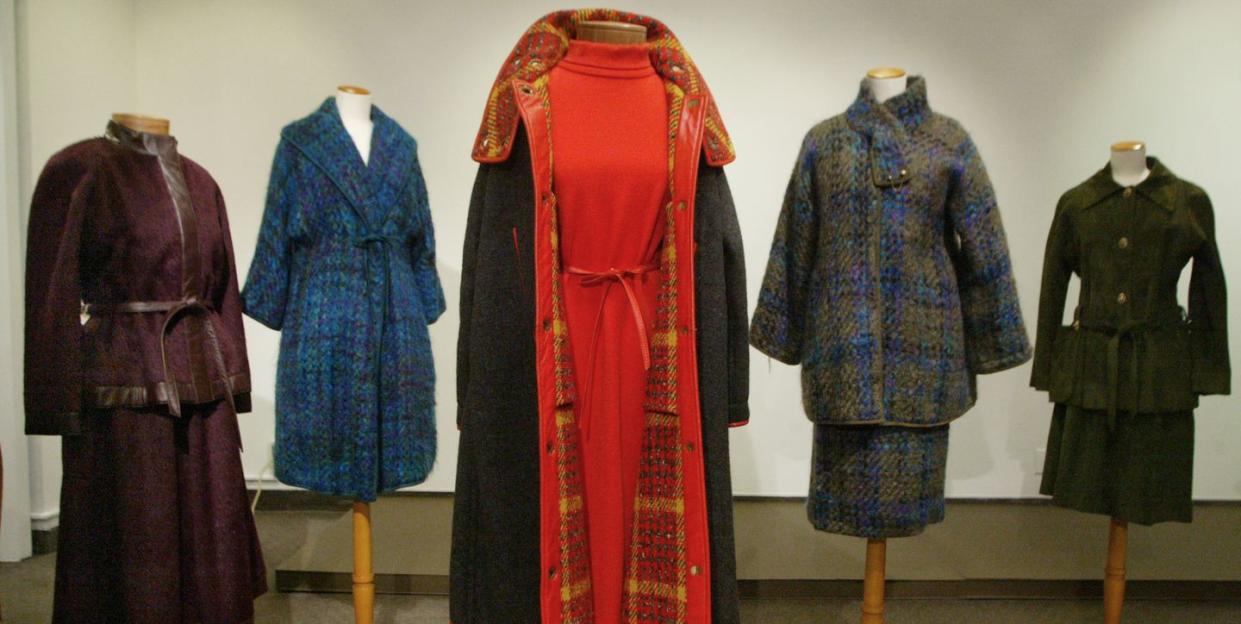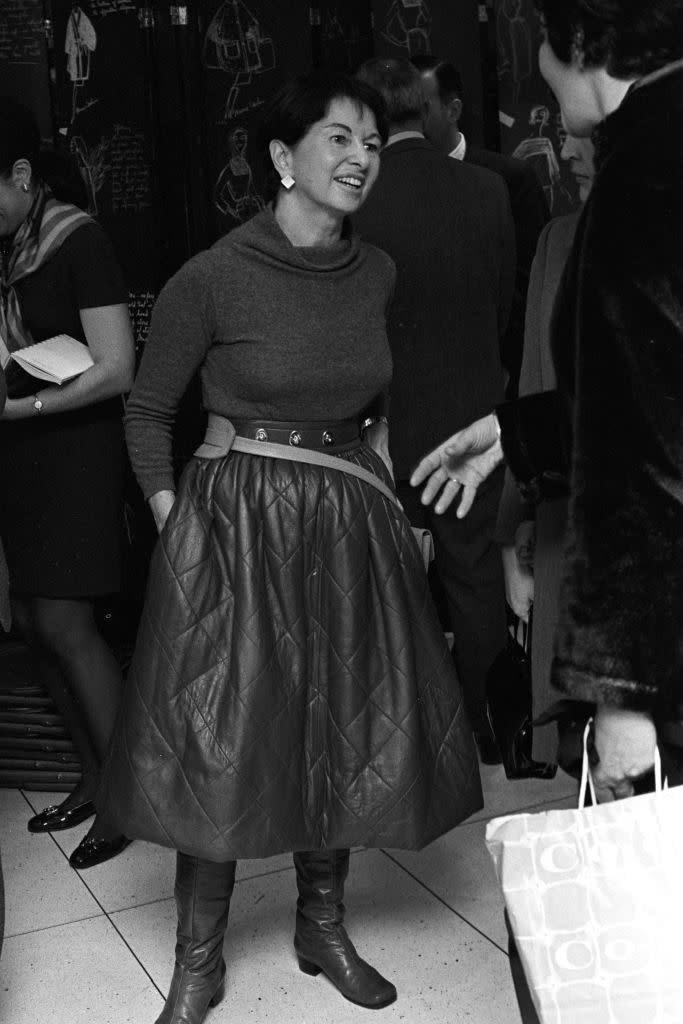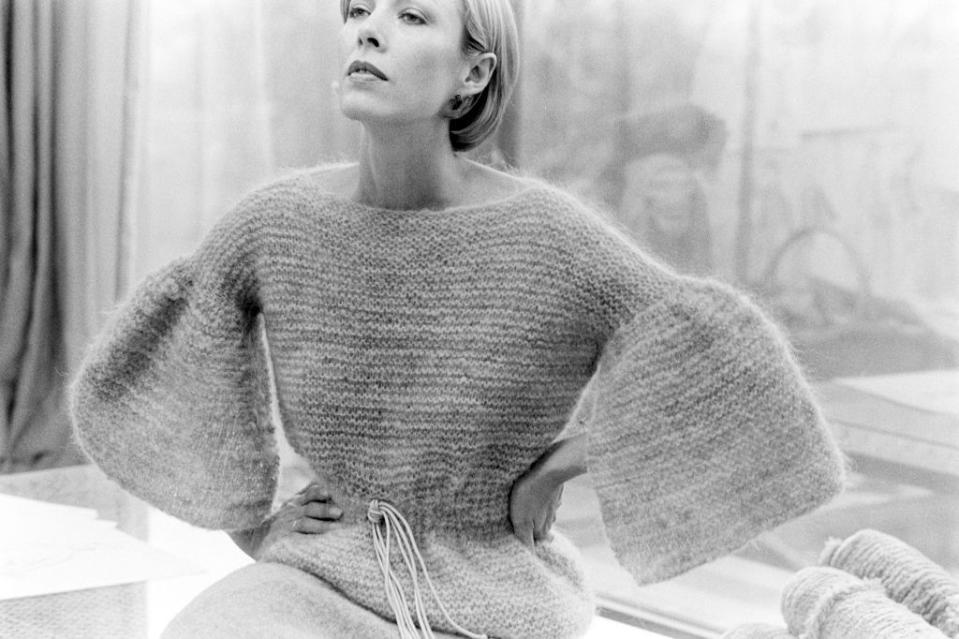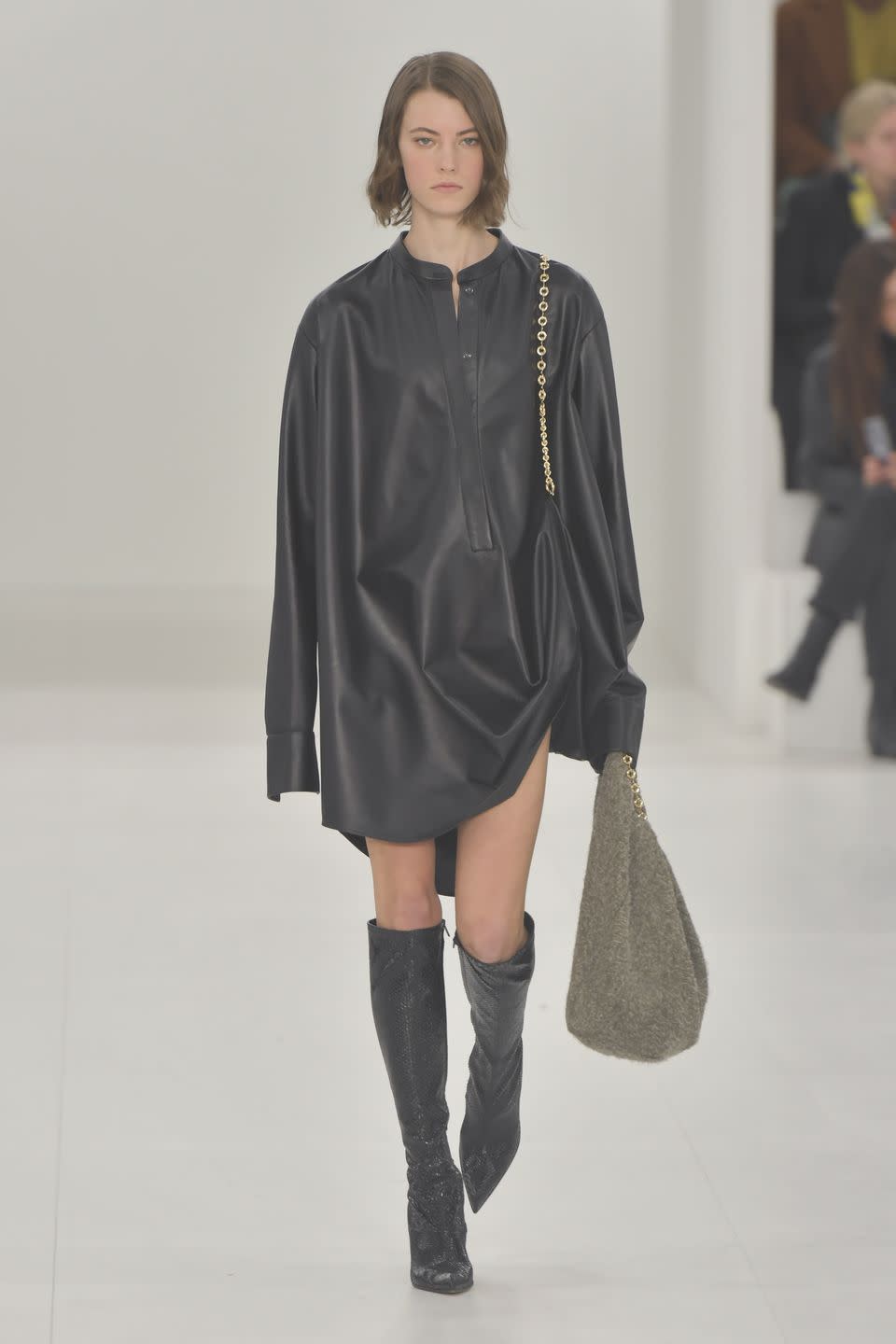Why Isn't Everyone Talking About Bonnie Cashin?

“I don’t think I would ever make sportswear the way that Bonnie did,” explained Dauphinette designer Olivia Cheng after presenting her Fall 2023 show in a Tribeca cabaret venue earlier this month. “I make things out of flowers and wood, and I don’t think she’d be about that.”
Cheng was referring to the late womenswear designer Bonnie Cashin, whose own pioneering designs in American sportswear, especially her iconic ‘dog leash skirt,’ became a pivotal origin point for Cheng’s trim lineup of fuzzy and colorful mohair wares. To research the collection, Cheng flew to Minnesota, where she delved into the Bonnie Cashin Archives, engrossing herself in Cashin’s diaries, watching films of interviews, and examining garments from Cashin’s extensive career. “The silhouettes she used are like this magic canvas, from which so many avenues of creativity—for designers all over the world, many of which don’t even know it—have sprung,” Cheng continued.
But even designers who didn’t officially collaborate with Cashin, as Cheng did, are taking heavy notes from her work of late. Indeed, Cashin was all over the Fall 2023 collections, her fingerprints on brands as diverse as Hermès, Loewe, Sacai, and Tibi.
Bonnie Cashin wasn’t a household name like the American sportswear giants who followed in her footsteps (Blass, Ralph, Donna, and Calvin, for example), but her influence has been accepted and absorbed so fully into our everyday fashion vocabulary that it exists without obviousness. “It becomes inconceivable [for many] to consider her work as the point of origin,” noted Dr. Stephanie Lake, a fashion historian and Cashin’s biographer (she authored the 2016 book Bonnie Cashin: Chic is Where You Find It), who also oversees the designer’s archives outside of Minneapolis. “So much of fashion today is hers.”
“She was among the most successful and critically acclaimed designers of her lifetime,” Lake continued. And yet, Cashin wasn’t as interested in empire-building—she never licensed, nor trademarked her name, nor did she work with a design team or name a successor—as she was in seeing the world, and how it functions, through the context of clothes, which is perhaps why her name is lesser-known than those of her contemporaries.
Canvas raincoats, ponchos, funnel-neck turtlenecks, oversized pockets, and the use of unconventional hardware like metal toggles and clasps in place of buttons are all design choices that seem vernacular, but are first and foremost Cashinisms. Even that TikTok-famous scarf-jacket by Totême bears a strong resemblance to an earlier Cashin design, as Lake pointed out on Instagram recently.

Quite unbelievably, Cashin is also credited for introducing the very concept of layering, in the 1950s. By 1975, an article from the New York Sunday News deemed the trend old enough to be well-established, but still new enough to credit Cashin as its forebear:
The layered look is hotter than ever—but not exactly new. It was twenty-five years ago that Bonnie Cashin . . . won a Neiman Marcus fashion award for her layering concept. She would protect women with fabric shell after fabric shell until undressing was a little like peeling an artichoke. Today, almost every designer is doing it, including Geoffrey Beene, Bill Blass, Calvin Klein.

Bill Cunningham, who was a fashion critic in the 1960s before becoming beloved for his New York Times street style column, frequently championed Cashin’s innovative and identifiable designs. He once even suggested that Cashin herself should be “immortalized by a national monument.” That her work lives on in myriad, infinite forms—both in various designers’ collections, and simply in the ether—is arguably far more significant.
Cashin’s biography makes it all the more unbelievable that she isn’t better known. Born in California, in 1908, Cashin’s original foray into fashion design was through costuming for ballet and theater companies, and later for Hollywood films such as Laura, Anna and the King of Siam, and A Tree Grows in Brooklyn. In the early 1960s, she was hired as the first womenswear designer for Coach, then a fledgling women’s accessories label, where she introduced the classic bucket-style bag and innovated the use of unconventional, industrial closures such as locks and toggles. She also designed for Hermès in the 1970s, overseeing the brand’s Sport label. Her aesthetic was wide-ranging—she loved bright pops of color such as magenta, and chartreuse, but balanced them against classic neutral tones like camel and gray. She often took inspiration from her travels and local immigrant communities, especially Japanese culture, which she credits for informing her own approach to layering—yet Cashin’s prevailing ethos was always grounded by the dictate that form follows function.
It’s her sense of whimsy mixed with pragmatism that seems to have influenced designers most recently. After devoting several past few seasons to surrealism and hyperbolic flourishes, designer Jonathan Anderson’s Fall 2023 collection for Loewe showcased a somewhat more practical approach to dressing, notably visible in a pair of leather tunic dresses, each slightly hitched up at the side by a strap hanging over the shoulder. Simultaneously sensible and buzzy for their visual interest, the winched-up constructions echoed Cashin’s own dog-leash skirt, first introduced in 1964.

According to Lake, Cashin designed the skirt, made from mohair blankets and dog leash clasps that latched onto metal rings attached at the hem, to satisfy two needs: “warmth, and a way to wear hostess skirts without tripping up the stairs with martinis in hand.” Nearly sixty years later, that desire for a skirt that’s comfortable, looks cool, and allows its wearer to move without spilling her cocktail—especially in an age of ubiquitous martinis—hasn’t changed. Indeed, this says as much about Cashin’s bold philosophy towards fashion, which was certainly ahead of its time, as much as it does about the current fashion moment, and how we still find these pieces so novel.
At Hermès, creative director Nadège Vanhee-Cybulski employed similar thinking with her quilted parkas that also featured straps hitching up the coats’ backs—allowing access to a back pocket for one’s phone or wallet, perhaps. The pieces can also convert into sleeping bags. Though she hasn’t offered up Cashin as an inspiration for the collection, which also happened to be rife with monochromatic layering, Vanhee-Cybulski’s sensibility and inclination to deliver such an approachable lineup of foundational pieces proves that practicality, and the kind of exquisite craftsmanship Hermès is known for, can often be the greatest luxury.
For Tibi founder and creative director Amy Smilovic, Cashin’s design ethos is one she shares and strives for: “She and Claire McCardell are always there, somewhere in my head—the ultimate in clever pragmatism, and always balanced,” she said. Smilovic’s recently published book, The Creative Pragmatist, expounds on her own ideas around dressing and personal style, very much speaking to these concepts, while Tibi’s pieces, like suiting featuring convertible (even or detachable) lapels, and sleek tops with removable sleeves, display that same mix of spontaneity and relevance. “I don’t think there’s a line-for-line similarity, but a passion for creativity and making something, and ensuring we can use it at the same time,” Smilovic added.
Even Gen Z brands, which are often defined by an obsession with fantasy, are finding a kindred spirit in Cashin. Dauphinette’s Cheng had been familiar with Cashin’s designs for a while, but it was the dog-leash skirt in particular that compelled her to consider her work in comparison to her own. “I love fashion that’s humorous and lets you in on a little joke,” she said. “There’s a cultural connector. You take two different things that are very common in their own worlds, and you bring them together, and suddenly it’s a bit strange.”
During her time out in Minnesota, Cheng spent her mornings and days immersed with Lake in Cashin’s archives, while afternoons and early evenings shifted to playtime with Lake’s young daughter, Odette. The synthesis of those two experiences—the inspiring discovery of Cashin’s well-preserved world, and the joy of a renewed and childlike playfulness—resulted in Cheng’s deliriously exuberant take on American sportswear.
In Cheng’s collection, there were swooping parabolic hemlines referencing another Cashin trademark, her “Parabola skirt”; upcycled handbags constructed from old footballs (a playful interpretation of the “sportier” side of sportswear); and two skirts made with vintage mohair blankets gifted from the archives. There were reminiscences of past Dauphinette collections too, including a vest covered with hand-sewn mother-of-pearl buttons that recalled a similarly-embellished jacket from the prior season.
“That’s a very Bonnie thing, also,” said Lake. “You could always order from her past collections.”
The forward-thinker that she was, Cashin often used the phrase “no season” in her press releases, and in various writings even mused on the idea of “non-fashion” as the prevailing trend of the future—meaning, if nothing is really in fashion, then nothing can really go out of fashion. That expansive, trend-transcending concept only now seems to be taking hold as we proudly champion and subscribe to our own forms of individualism and personal style (and the notion of all fashion), which is why, beyond any designs, Cashin’s clear and present influence still feels so fresh.
You Might Also Like

 Yahoo News
Yahoo News 
